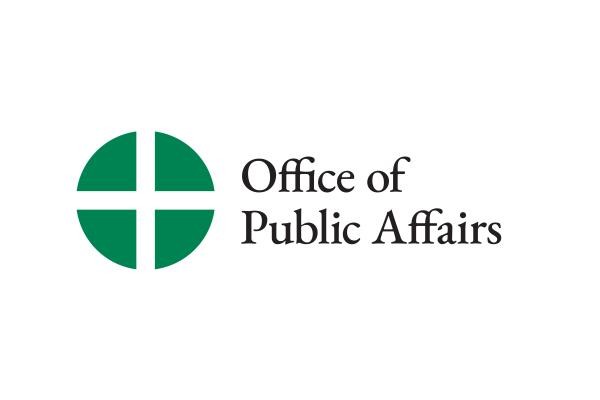Bishops Approve Canonical Step for Sainthood Causes
BALTIMORE—The U.S. bishops gathered at their annualfall General Assembly in Baltimore, have approved by a voice vote the canonicalconsultation of four causes for beatification and canonization: Julia Greeley,sought by Archbishop Samuel Aquila of Denver; Sister Blandina Segale, S.C.,sought by Archbis
BALTIMORE—The U.S. bishops gathered at their annualfall General Assembly in Baltimore, have approved by a voice vote the canonicalconsultation of four causes for beatification and canonization: Julia Greeley,sought by Archbishop Samuel Aquila of Denver; Sister Blandina Segale, S.C.,sought by Archbishop John C. Wester of Santa Fe, New Mexico; Fr. Patrick Ryan,sought by Bishop Richard F. Stika of Knoxville, Tennessee; and Fr. BernardQuinn, sought by Bishop Nicholas DiMarzio of Brooklyn.
Episcopal consultation is a step in the CatholicChurch's process toward declaring a person a saint.
Julia Greeley was born into slavery in Hannibal,Missouri, sometime between 1838-1848. At an early age, she suffered at thehands of a slave owner, who destroyed her right eye while beating her mother.She was freed by President Abraham Lincoln's Emancipation Proclamation in 1863,and entered the Catholic Church while in Colorado, receiving the sacrament ofbaptism in 1880. As a lay Franciscan, closely affiliated with the Jesuits ather parish, she was actively involved in promoting the faith and devotion tothe Sacred Heart. She became known by her acts of charity and mercy to thoseliving on the margins of society, in spite of living in extreme poverty herself.Greeley died in 1918.
Sister Blandina Segale, S.C. was born in 1850 inCicagna, Italy. She and her familyimmigrated to the United States in 1854 and settled in Cincinnati, Ohio. Hereducation and life was strongly influenced by the Sisters of Notre Dame, theSisters of Mercy and the Sisters of Charity of Cincinnati. She joined thelatter community at 16. Sister Blandina was sent to work in schools, orphanagesand hospitals in Trinidad and Cincinnati, Ohio; Santa Fe and Albuquerque, NewMexico; and Pueblo, Colorado. She became a defender of the poor, the sick, themarginalized, Native Americans, and Mexican and Italian immigrants. She oftenvisited jails and became involved in issues such as human trafficking andjuvenile delinquency. She died in 1941, at 91 years old.
Father Patrick Ryan was born in 1845 in County Tipperary,Ireland. His family immigrated and settled in New York. He was ordained to thepriesthood in 1869 in Nashville, Tennessee. Father Ryan was pastor of Saints Peter and Paul's parish, for six yearsand during that time he became a shepherd who gave his life in ministering tohis flock. In 1878, he died at 33 yearsold, when his community in Chattanooga was struck with a yellow fever epidemic thattook the lives of hundreds. In the midst of the epidemic, Fr. Ryan is reportedto have been seen going from house to house in the worst infected areas of thecity to find what he could do for the sick and the needy. Besides ministeringto the sick and dying during the epidemic, one of his greatest accomplishmentswas to open a private academy and a parish school under the direction of theDominican Sisters.
FatherBernard Quinn was born in 1888 in Newark, New Jersey. He was the son of poorIrish immigrants. He was ordained to the priesthood in 1912, and served as apriest in the Diocese of Brooklyn. There, he worked unceasingly to promote the faith, and priestly andreligious vocations among African-Americans, and helped those in mostneed. In 1918 during World War I, hevolunteered for military service and was assigned to France where herministered to the sick and wounded soldiers in hospitals. Upon his return toBrooklyn, he reached out to African-American groups and established the St.Peter Claver Church in 1922, a ministry for black Catholics in the community.With the growth of homelessness among African-American children even prior tothe 1929 Depression, Father Quinn founded an orphanage that was twice burned tothe ground by the Ku Klux Klan (KKK). Putting his life at risk, he successfullybuilt the orphanage for a third time. He went on to build a parish school,convent and parish center that welcomed everyone regardless of their race orreligion. He went on to establish additional missions throughout Brooklyn.
More information on the sainthood process is availableat: www.usccb.org/about/public-affairs/backgrounders/saints-backgrounder.cfm.
---
Keywords: USCCB, U.S. bishops, U.S. Conference of Catholic Bishops, Novembermeeting, General Assembly, Baltimore,
# # #
MEDIA CONTACT:
Norma Montenegro Flynn
O: 202-541-3202
16-156
Sec,CathPress,DD,DioNews,DP

